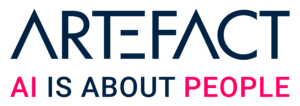It’s no secret that leading a data and intelligence office in a government entity is a difficult job.
This role faces numerous pressures, both internally (mainly around data availability, quality, and tech readiness) and externally (mainly compliance). While the data office is not the “owner” of the data, it usually acts as the “custodian” and is expected to facilitate information flow and value creation in the organization. In fact, ministers and leaders of government organizations ultimately measure the success of their data/ intelligence offices by the extent to which the right intelligence is available to the right decision-makers and stakeholders at the right time.
Moreover, the job doesn’t come with an instruction manual, and it is highly contextual: what often works for one large ministry can easily fail in smaller regulatory bodies.
However, through our work with government organizations, we have identified 10 practices that distinguish successful data and AI leaders in government entities from the rest.
1) They sync with the wider enterprise strategy
Successful data and intelligence leaders recognize what cannot be measured, cannot be managed, so they develop Data and AI initiatives that align with the overarching goals of the government entity to ensure relevance, avoid redundancy, and maximize impact. They collaborate closely with strategic planning teams to identify ways to collect data on challenging KPIs and their underlying drivers. Furthermore, they communicate clearly how AI initiatives drive outcomes in key areas such as citizen services, public finance, and economic development. Lastly, they proactively and regularly review the impact and alignment of data projects in relation to the overall strategy.
2) They go above and beyond to serve and collaborate with their stakeholders
Effective data and intelligence leaders adopt a service mindset toward their internal and external stakeholders, treating them as customers. They understand their stakeholders’ needs and challenges and continuously align on how to address them together. In addition, they launch self-service products and services that facilitate, and even democratize, access to data and intelligence based on predefined rights. They proactively seek feedback to gauge satisfaction among stakeholders and improve service offerings.
3) They are tech-agnostic but deliberate in their tech choices
The best data and intelligence leaders understand that investing in the wrong tools or platforms can lead to costly mistakes and limited scalability. They first conduct a needs assessment and a market scan to match technologies with organizational goals and needs. They involve cross-functional teams in the tech selection process to ensure usability and compatibility. They build modular and scalable architectures to mitigate dependency risks. Finally, they pilot tools with small-scale deployments before organization-wide rollouts.
4) They prioritize data acquisition, collection, and availability
Top leaders know very well that data is the fuel for Business Intelligence, Machine Learning, and Artificial Intelligence. They map out the data needed for decision-making and operations and strive to collect it, whether from primary systems and sources, premium databases, secondary data partnerships, or publicly available sources. They create centralized data catalogs to make existing datasets more discoverable and establish clear ownership and accountability for each data source.
5) They do not tolerate data quality issues
The finest leaders recognize that poor data quality undermines trust and leads to flawed decision-making. Therefore, they establish data quality controls and checks. They dig deep into understanding the root causes of data quality issues and find long-term solutions. Moreover, they support their teams in implementing automated quality checks for accuracy, completeness, and timeliness and define business and technical rules to assess consistency, validity, and integrity. Additionally, they set up a dedicated data stewardship team to continuously address quality gaps.
6) They “problem-solve” and bring valuable insights to the table
The greatest data and intelligence leaders recognize that a well-crafted insight has the power to make decision-making a fairly easy process. Therefore, they understand that their role is not just technical, and they invest in understanding and structuring business problems. The best leaders even proactively find creative solutions leveraging data and intelligence and share them with their stakeholders. They present their solutions with powerful storytelling and deliver lasting results.
7) They build agile, multidisciplinary teams
Successful leaders recognize that they are as strong as their weakest team members. Due to the complexity of data and AI initiatives, having diverse skill sets and a responsive approach are “must-haves”. As a result, these leaders recruit top talent in data science, engineering, analytics, and design. They instill nimble work models to allow for iterative development and faster delivery of use cases, while promoting a learning culture through upskilling and certification.
8) They think of compliance and governance at the design stage, not afterwards or as a side project
Celebrated leaders understand that proactive governance ensures adherence to regulations and minimizes risks. As a result, they involve cybersecurity, privacy, and compliance teams early in project design, embedding security and privacy-by-design principles in all AI workflows. They also maintain comprehensive documentation to ensure audit readiness and leverage tools for automated compliance checks against industry frameworks, as well as local government regulations and standards.
9) They bring in the right partners only if and where needed
The best leaders first assess whether there is a real capability or resource gap. In fact, they know that brand names alone, without the right expertise, will do little to solve core issues. As a result, they are selective in their partnership choices, bringing in only those who can truly address these specific gaps. Additionally, they ensure robust knowledge transfer mechanisms and continuously monitor and evaluate their partners based on their expertise, cultural fit, and achievements to date.
10) They showcase achievements to the C-level
Top leaders know that visibility among the executive suite ensures continued investment and top-down support. As a result, they create a cadence of executive briefings to highlight key milestones and ROI. They present use case studies and conduct demo days to showcase successful products. Also, they share what has worked and what has not. Finally, they quantify the outcomes (e.g., cost savings, time reductions) and tie them back to strategic objectives.
The role of data and intelligence leaders in government entities is becoming increasingly crucial for overall enterprise success. By adopting these ten habits, data and AI leaders break down the boundaries of traditional governance and deliver meaningful, measurable results for both the government and the public. The true measure of success lies not just in the sophistication of the technology, but in its ability to solve real problems, enhance public trust, and pave the way for a smarter, more agile government.

 BLOG
BLOG




